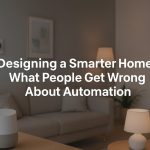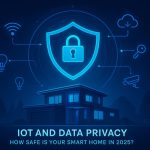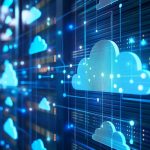Smart homes are evolving fast, packed with intelligent devices from thermostats to voice assistants. But one of the simplest — and most overlooked — tools of automation is the humble smart plug. Despite its small size and affordable price, this gadget can quietly transform how your home operates.
What Is a Smart Plug?
A smart plug is a compact device that plugs into a standard wall outlet. Once installed, it allows you to control whatever is plugged into it — lamps, coffee makers, heaters, and more — using your smartphone, voice assistants, or automation schedules.
Why Smart Plugs Matter
While it may not seem revolutionary at first glance, a smart plug is a gateway to automating everyday appliances. Here’s why they matter:
1. Affordability and Accessibility
Smart plugs are often the most affordable way to enter the world of smart homes. For under $20, you can start automating lights, coffee machines, fans, or even Christmas lights without replacing your existing appliances.
2. Easy Installation
No wiring or technical skills needed. Just plug it in, connect it to your home Wi-Fi, and pair it with an app. Within minutes, you’re up and running.
3. Remote Control and Scheduling
Turn devices on or off remotely. Forgot to turn off the iron? Do it from your phone. Want your living room lamp to turn on at sunset? Set a schedule.
4. Energy Monitoring and Savings
Some smart plugs offer energy monitoring, showing how much electricity an appliance uses. This can help reduce your energy bill by identifying wasteful habits or vampire devices (things that draw power even when off).
5. Voice Assistant Integration
Most smart plugs work with Amazon Alexa, Google Assistant, or Apple HomeKit. You can simply say, “Hey Google, turn off the fan,” and it responds instantly.
Creative Ways to Use Smart Plugs
- Morning Routine: Auto-start your coffee maker at 7:00 AM.
- Safety: Turn off the curling iron remotely.
- Security: Randomize lights when you’re away to simulate someone being home.
- Holiday Decor: Automate Christmas lights without crawling under the tree.
- Limit Kids’ Screen Time: Set the TV to turn off after bedtime.
Things to Watch Out For
- Wi-Fi Dependency: Most smart plugs rely on Wi-Fi. If your network is unstable, so is your automation.
- App Compatibility: Stick with well-known brands to ensure good app support and updates.
- Power Ratings: Not all plugs are rated for high-wattage appliances like space heaters or air conditioners.
Choosing the Right Smart Plug
Look for these features:
- Energy Monitoring
- Compact Size (especially if you’re using it behind furniture)
- Voice Assistant Support
- Scheduling Capabilities
- Away Mode (random on/off patterns)
Final Thoughts
Smart plugs may not be flashy, but they’re one of the most effective ways to begin building a smart home. They add convenience, efficiency, and even a layer of safety — all for the price of a pizza.
Don’t underestimate this tiny powerhouse. If you’re just starting with home automation, or looking to get more from your existing setup, smart plugs are where you should plug in first.
FAQ
Q: Can smart plugs save energy?
A: Yes. With scheduling and monitoring features, smart plugs can reduce standby power usage and ensure devices aren’t running unnecessarily.
Q: Are smart plugs safe?
A: When used properly and with devices within their power limits, smart plugs are very safe. Choose models with safety certifications.
Q: Do I need a smart home hub?
A: Most modern smart plugs work without a hub and connect directly to Wi-Fi.
Q: Can I use smart plugs outdoors?
A: Yes, but you need weatherproof models specifically designed for outdoor use.
Explore more beginner-friendly smart home tips in our Smart Home Basics section or learn how smart sensors can elevate your home automation experience.
- Designing a Smarter Home in 2026: What People Get Wrong About Automation
 Smart homes were once science fiction, but today they’re a reality in millions of households. With voice assistants, smart plugs, and automated lighting systems, it’s easy to assume home automation is simply a matter of plugging in a few devices. Yet, many homeowners quickly discover that “smart” doesn’t always mean simple. In this article, we’ll…
Smart homes were once science fiction, but today they’re a reality in millions of households. With voice assistants, smart plugs, and automated lighting systems, it’s easy to assume home automation is simply a matter of plugging in a few devices. Yet, many homeowners quickly discover that “smart” doesn’t always mean simple. In this article, we’ll… - Automated Online Trading: How IoT is Redefining Financial Markets
 Introduction automated online trading In a world where milliseconds can decide millions, the fusion of Internet of Things (IoT) technology and automated online trading is reshaping global finance. What once relied solely on human judgment now increasingly depends on connected machines, real-time data, and predictive algorithms. From weather sensors influencing agricultural trades to smart logistics…
Introduction automated online trading In a world where milliseconds can decide millions, the fusion of Internet of Things (IoT) technology and automated online trading is reshaping global finance. What once relied solely on human judgment now increasingly depends on connected machines, real-time data, and predictive algorithms. From weather sensors influencing agricultural trades to smart logistics… - The Role of Linux in IoT: Powering the Connected World
 The Internet of Things (IoT) is everywhere—from smart homes and wearable devices to industrial automation and self-driving cars. Behind the scenes, one operating system plays a surprisingly dominant role: Linux. Known for its stability, flexibility, and open-source nature, Linux has become the backbone of countless IoT devices and platforms. But what makes Linux so well-suited…
The Internet of Things (IoT) is everywhere—from smart homes and wearable devices to industrial automation and self-driving cars. Behind the scenes, one operating system plays a surprisingly dominant role: Linux. Known for its stability, flexibility, and open-source nature, Linux has become the backbone of countless IoT devices and platforms. But what makes Linux so well-suited… - The Smart Home Revolution in 2025: How IoT is Transforming Everyday Living
 In the past decade, the vision of a truly smart home has moved from futuristic fantasy to everyday reality. As we step into 2025, the Internet of Things (IoT) has matured into a robust ecosystem, connecting appliances, security systems, lighting, and even entertainment devices under one seamless digital roof. The result? Homes that are safer,…
In the past decade, the vision of a truly smart home has moved from futuristic fantasy to everyday reality. As we step into 2025, the Internet of Things (IoT) has matured into a robust ecosystem, connecting appliances, security systems, lighting, and even entertainment devices under one seamless digital roof. The result? Homes that are safer,… - IoT and Data Privacy: How Safe Is Your Smart Home in 2025? – IoT Security
 The smart home revolution has made everyday life more convenient than ever. From voice assistants that control the lights to security cameras that send alerts directly to your phone, connected devices have become part of our daily routines. But with this convenience comes an important question: how safe is your personal data in a world…
The smart home revolution has made everyday life more convenient than ever. From voice assistants that control the lights to security cameras that send alerts directly to your phone, connected devices have become part of our daily routines. But with this convenience comes an important question: how safe is your personal data in a world…









